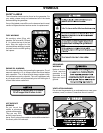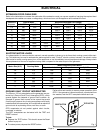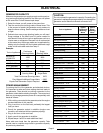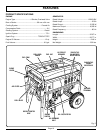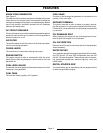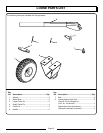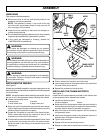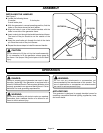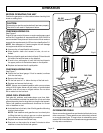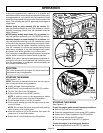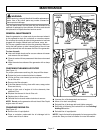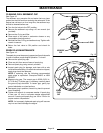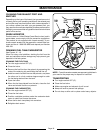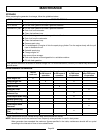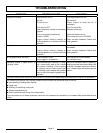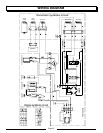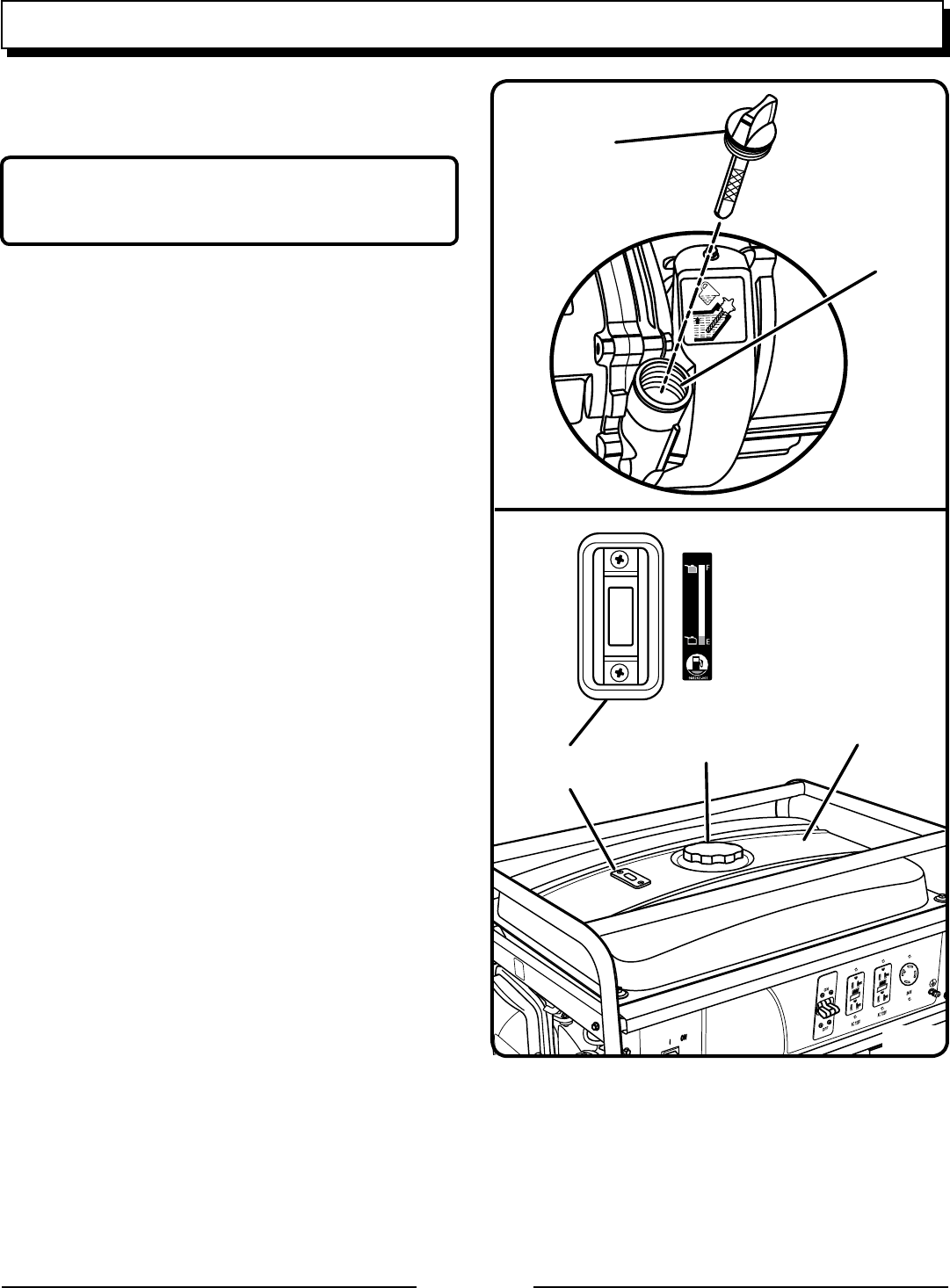
Page 15
FUEL
AC CIRCUIT
BREAKER
Fig. 6
Fig. 7
OIL CAP/
DIPSTICK
OIL FILL
HOLE
FUEL LEVEL
GAUGE
FUEL TANK
FUEL CAP
OPERATION
BEFORE OPERATING THE UNIT
Position the generator on a flat surface before checking fluid
levels or adding fluid.
CAUTION:
Attempting to start the engine before it has been properly
filled with oil will result in equipment failure.
CHECKING/ADDING OIL
See Figure 6.
Engine oil has a major influence on engine performance and
service life. For general, all-temperature use, SAE 10W-30 is
recommended. Always use a 4-stroke motor oil that meets or
exceeds the requirements for API service classification SJ.
NOTE: Non-detergent or 2-stroke engine oils will damage
the engine and should not be used.
Unscrew the oil cap/dipstick and remove.
Wipe dipstick clean and re-seat in hole; do not re-
thread.
Remove dipstick again and check oil level. Oil level should
fall within the hatched area on the dipstick.
If level is low, add engine oil until the fluid level rises to
the upper portion of the hatched area on the dipstick.
Replace and secure the oil cap/dipstick.
CHECKING/ADDING FUEL
See Figure 7.
Check the fuel level gauge. If fuel is needed, continue
with the next step.
Remove the fuel cap.
Fill the fuel tank to 1 in. below the top of the fuel neck.
Replace and secure the fuel cap.
NOTE: Always use unleaded gasoline with a pump octane
rating of 86 or higher. Never use old, stale, or contaminated
gasoline, and do not use an oil/gas mixture. Do not allow
dirt or water into the fuel tank.
USING FUEL STABILIZER
Fuel gets old, oxidizes, and breaks down over time. Add-
ing a fuel stabilizer extends the usable life of fuel and helps
prevent deposits from forming that can clog the fuel system.
Follow fuel stabilizer manufacturer’s directions for correct
ratio of stabilizer to fuel.
Add stabilizer to fuel tank, then fill with gasoline following
previous instructions.
NOTE: Fuel stabilizer and gasoline can be mixed prior
to filling the tank by using a gas can or other approved
fuel container and shaking gently to combine.
Replace and secure the fuel tank cap.
Start and run the engine for at least 5 minutes to allow
stabilizer to treat the entire fuel system.
OXYGENATED FUELS
Some conventional gasolines are blended with alcohol or an
ether compound. These gasolines are collectively referred
to as oxygenated fuels. To meet clean air standards, some
areas of the United States and Canada use oxygenated fuels
to help reduce emissions.



